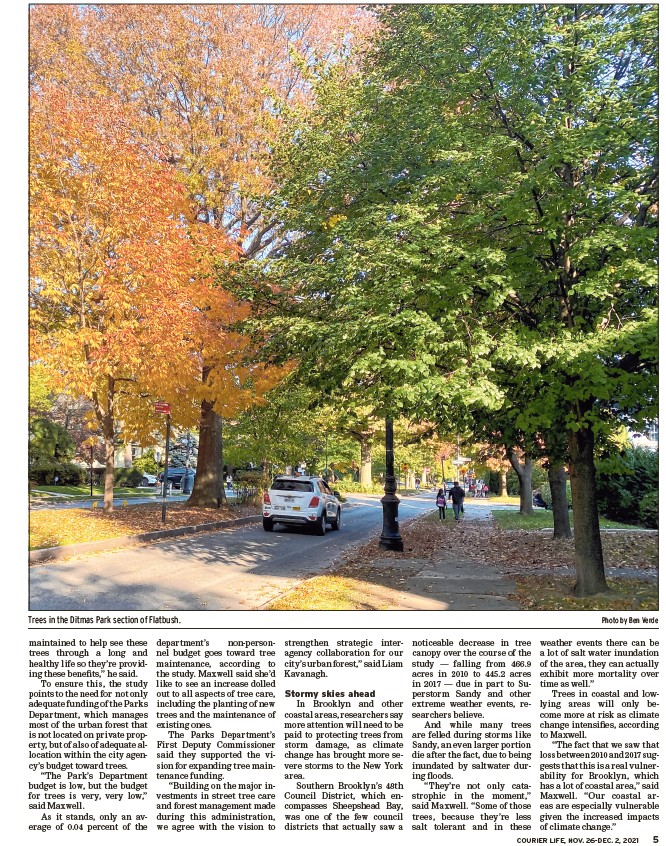
Trees in the Ditmas Park section of Flatbush. Photo by Ben Verde
COURIER LIFE, NOV. 26-DEC. 2, 2021 5
maintained to help see these
trees through a long and
healthy life so they’re providing
these benefi ts,” he said.
To ensure this, the study
points to the need for not only
adequate funding of the Parks
Department, which manages
most of the urban forest that
is not located on private property,
but of also of adequate allocation
within the city agency’s
budget toward trees.
“The Park’s Department
budget is low, but the budget
for trees is very, very low,”
said Maxwell.
As it stands, only an average
of 0.04 percent of the
department’s non-personnel
budget goes toward tree
maintenance, according to
the study. Maxwell said she’d
like to see an increase dolled
out to all aspects of tree care,
including the planting of new
trees and the maintenance of
existing ones.
The Parks Department’s
First Deputy Commissioner
said they supported the vision
for expanding tree maintenance
funding.
“Building on the major investments
in street tree care
and forest management made
during this administration,
we agree with the vision to
strengthen strategic interagency
collaboration for our
city’s urban forest,” said Liam
Kavanagh.
Stormy skies ahead
In Brooklyn and other
coastal areas, researchers say
more attention will need to be
paid to protecting trees from
storm damage, as climate
change has brought more severe
storms to the New York
area.
Southern Brooklyn’s 48th
Council District, which encompasses
Sheepshead Bay,
was one of the few council
districts that actually saw a
noticeable decrease in tree
canopy over the course of the
study — falling from 466.9
acres in 2010 to 445.2 acres
in 2017 — due in part to Superstorm
Sandy and other
extreme weather events, researchers
believe.
And while many trees
are felled during storms like
Sandy, an even larger portion
die after the fact, due to being
inundated by saltwater during
fl oods.
“They’re not only catastrophic
in the moment,”
said Maxwell. “Some of those
trees, because they’re less
salt tolerant and in these
weather events there can be
a lot of salt water inundation
of the area, they can actually
exhibit more mortality over
time as well.”
Trees in coastal and lowlying
areas will only become
more at risk as climate
change intensifi es, according
to Maxwell.
“The fact that we saw that
loss between 2010 and 2017 suggests
that this is a real vulnerability
for Brooklyn, which
has a lot of coastal area,” said
Maxwell. “Our coastal areas
are especially vulnerable
given the increased impacts
of climate change.”